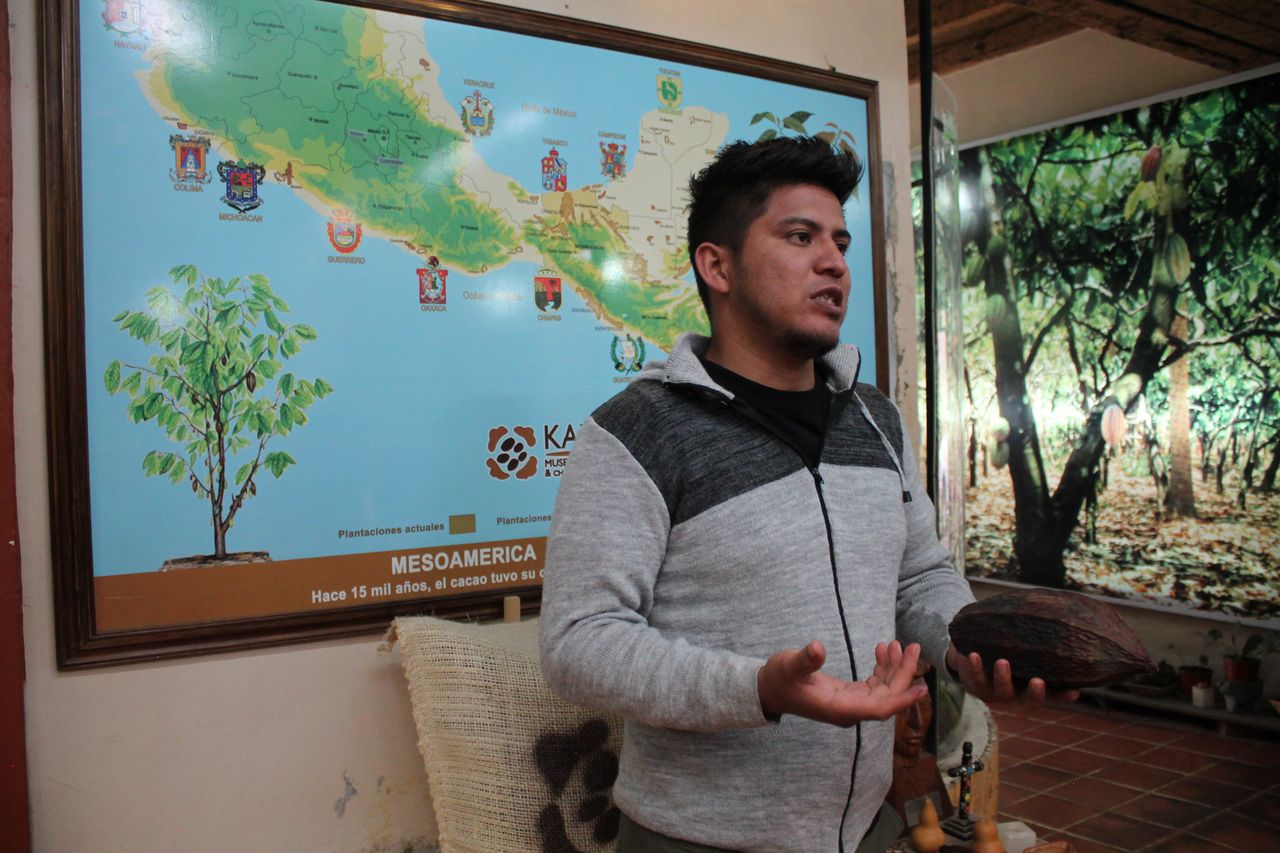
The Maya peoples were the first to process cacao beans. They were making a bitter drink for the rich ones and for the purpose of ritual. A few centuries later sweet chocolate was made. – What we consider chocolate today is a synthetic product with a chocolate taste – says David Sánchez of the Museo del Cacao y Chocolate in Chiapas.
A bitter water
The Museo del Cacao y Chocolate in San Cristóbal de las Casas is located in a two-story building in the centre of the colonial city. You can come here to take a course of learning the chocolate production process or order a hot drink in a cafe. There is a lot to choose from. I order liquid chocolate, which contains 50% of cacao. They serve it in a large, oval shell. – In the past, the Maya peoples used to drink from shells – explains the waitress.
The chocolate is sour, but I imagine that’s how it should taste as the word “chocolatl” in Tzotzil (Maya language) means “bitter water”. Many centuries had passed before it turned into sweet and warm chocolate for drinking. First, however, cacao beans were used as a currency, and not everyone could afford to enjoy it. In the past one could earn 100 beans for a working day, a prostitute cost 20, and a slave who could dance and sing was worth about 2,500 cacao beans. The jade necklace was much more expensive. It cost as much as 125,000 cacao beans. It needed five men to transport them to the seller.
The habit of drinking chocolate liquid was taken over by the Aztecs. Their ruler, Montezuma II, used to drink a mix of cacao beans, maize, sweet agave and vanilla juice, from a golden calyx. Like the Maya peoples, he believed that it strengthened endurance, fought fatigue, and boosted libido. In 1519, when Hernan Cortés and his troops entered the Aztec capital of Tenochtitlán, they discovered loads of cacao beans in the royal treasury. The conquistador took a valuable treasure to Europe. However, the Spaniards did not like the cold and bitter drink from the cacao beans. They thought it was disgusting. Everything changed around the year 1540, when the Guatemalan nuns added hot water, vanilla and sugar to the ground cacao. That’s how sweet chocolate was invented, and it conquered the Old Continent.
The best cacao is from Mexico
David, the guide working in the Museo del Cacao y Chocolate in Chiapas, is showing up a yellow fruit the size of a small melon. There are cocoa beans in it.
– Cacao trees have been grown in Mexico and Guatemala for over 12,000 years – he explains. – After the Conquest, the trees began to be known in other countries of South America and Africa. In Mexico, they can only be found in two states: Chiapas and Tabasco. They grow in a humid and tropical climate. They also need a particular soil. That’s why they cannot grow everywhere.
The cacao tree can grow up to 10 metres high. It starts to fruit after seven years of growth and fruits twice a year. It usually has 35 to 80 fruit. The ripe fruit is cut with a knife or machete. In the middle, apart from the seeds, there is a sweet pulp that can be eaten or used, for example, to make cacao liquors. Today, the largest producer of cacao is Ivory Coast. Mexico is in 15th place in the world.
– The cacao beans that grow in Africa or the Amazon rainforest are twice as large as ours, but their beans are more bitter, so you have to add more ingredients to soften their taste – says David.
Sugar that tastes like chocolate
The countries where cacao trees grow, export most of their production. Chocolate is produced, among others, in Belgium, Switzerland, Italy, France and the United States. – Most Americans and French eat chocolate with the high amount of cacao – says David. – In turn, usual, commercial chocolate, which is sold to us today, is not good.
The man points to the board where I can see well known different kinds of chocolate. It turns out that regular milk chocolate contains only 8% of cacao, 45% of sugar and various flavours. My favourite Swiss chocolate drink is composed of 5% of cacao and 65% sugar.
– We are not demanding consumers, because then all these companies would be forced to make better quality products – says David. – However, I’m pretty sure that when we go to the store and buy chocolate, we do not check its ingredients. For example, for us, the producers, white chocolate is not chocolate, because there is no cacao in it, only cacao butter. Companies sell us a lie, something that tastes like chocolate.
Photo: David Sánchez of the Museo del Cacao y Chocolate in Chiapas























